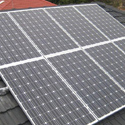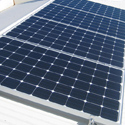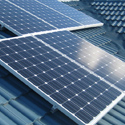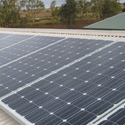About Solar

What is Solar Power?
What are photovoltaics? Photovoltaic (PV) cells are solid-state semiconductor devices that convert light directly into electricity. They are usually made of silicon with traces of other elements and are first cousins to transistors, LEDs and other electronic devices. Through the external circuit they give up their energy as useful work (turning motors, lighting lamps, etc.) and return to the solar cell. The PV process is completely solid state and self-contained. There are no moving parts and no materials are consumed or emitted.
How does Solar Power Work?
Simply put, photovoltaic tiles and other forms of solar energy work by converting some of the energy in sunlight into a clean form of electricity that can be used in our houses. The PV cells consist of a positive and a negative slice of silicon placed under a thin slice of glass. As the protons of the sunlight beat down onto the PV cell, they knock the neutrons off the silicon. The negatively charged free neutrons are attracted to the silicon but are trapped by the magnetic field that is formed from the opposing fields. Small wires on the silicon catch these neutrons and when connected in a circuit, an electric current is formed.
This reaction gives Direct Current electricity though, and it must be passed through an inverter to be converted into an Alternating Current used in our homes to power any electrical items. Some of the power is lost in this part of the process as the inverter is only around 95% efficient but this is a much greater efficiency than was once available.
The nature of the PV cell means there is little or no maintenance required and there are no moving parts; this means that a typical PV cell can last up to 40 years with no work besides an annual clean.













